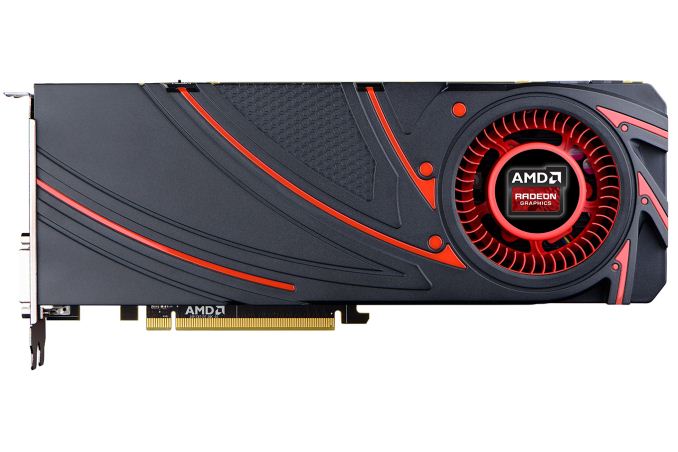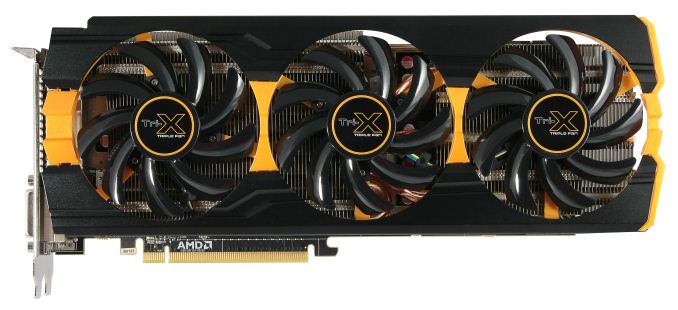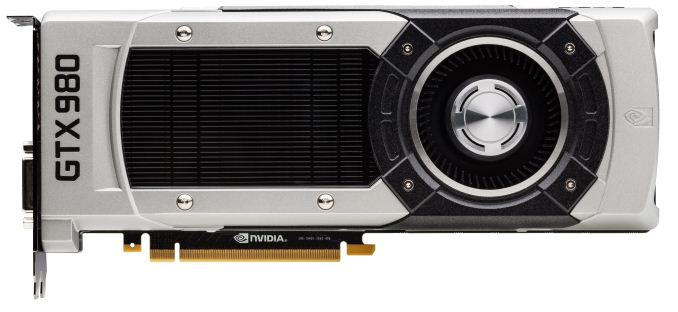AMD Radeon R9 290 Series Prices Finally Begin To Fall
by Ryan Smith on October 7, 2014 12:00 PM EST
With the launch of NVIDIA’s Maxwell-powered GeForce GTX 900 series last month, it was immediately obvious that NVIDIA had been able to deal a swift blow to AMD’s product lineup by surpassing AMD’s performance while significantly undercutting their pricing. At the time we were expecting AMD to quickly respond with the necessary price cuts to keep the R9 290 series competitive with the GTX 900 series, but surprisingly even a week later this had yet to happen.
Now a bit over two and a half weeks after the GTX 900 series launch, we’re finally seeing Radeon R9 290 series pricing fall in response to NVIDIA’s launch. AMD has not announced an official price cut at this time – and admittedly neither AMD nor NVIDIA tend to announce reactive price cuts – so it’s not clear whether this is AMD’s doing, board partner’s, retailers, or most likely all three. But regardless, retail video card prices at Newegg and other etailers have seen some substantial drops that help bring back at least some balance between AMD and NVIDIA’s high end video card lineups.
A number of Radeon R9 290 cards can now be found for around $300 after rebate, with a couple more factory overclocked models at $310. With HIS, Sapphire, PowerColor, Asus, and XFX represented, this is a broad selection of vendors with a bit less than half of Newegg’s stock now at or around $300. Meanwhile R9 290X can be found for $399, again with a wide selection of vendors and roughly half of Newegg’s stock at or near that price. The remainder of Newegg’s stock in turn generally consists of heavily overclocked or otherwise premium cards that carried their own price premium before these latest cuts.
Speaking of AMD card prices, it should also be noted that AMD’s Never Settle Forever bundle is still active even after this round of price cuts. AMD and their partners will be continuing to try to influence the value proposition of their products by including free games.
For AMD these price cuts don’t come a moment too soon, and while they are going to help the competitive landscape I’m not convinced this is the last time we’re going to see AMD cut prices. As we discussed in our review of the GTX 970, comparing stock-to-stock, the $329 GTX 970 is every bit as fast as the now $400 R9 290X. If AMD wants to be price/performance competitive with NVIDIA then there’s still an additional $70 price difference between the two cards, a gap further muddied by AMD’s game bundle and NVIDIA’s superior energy efficiency. Strictly speaking $400 may not be low enough for the R9 290X, but no doubt AMD wants to see what sales are like at $400 before cutting prices on their single-GPU flagship any further.
The R9 290 on the other hand is in an interesting spot. At resolutions below 2160p it trails the GTX 970 by around 10%, but then again at $300 it’s also priced about 10% lower. Since it ships at a lower clockspeed than R9 290X a lot of AMD’s partners also goose the core clock on R9 290, which improves performance a bit but isn’t enough to close that 10% gap. What it does mean however is that at least so long as energy efficiency is not a concern, R9 290 is appropriately priced for its performance. However if energy efficiency is a concern, then AMD doesn’t have any kind of counter to GM204 at this time.
If anything the one wildcard at this point is the availability of the new GeForce cards. Despite stock more-or-less holding up immediately post launch, we’ve seen both the GTX 980 and GTX 970 go out of stock in the last week. As of the time of this writing it looks like Newegg has received their Tuesday shipment, so there is stock available, but it’s a thin selection of just a few different cards (including a model or two at MSRP). For prospective buyers this means either playing inventory games or grabbing the AMD alternative, and for AMD this is all the more reason not to cut prices too drastically while GeForce availability is still limited. As for NVIDIA it’s been a while since we’ve seen them capacity constrained on the high end, so while it’s solid evidence that they’ve done everything right with the GTX 900 series launch, it does mean that they’re also going to be leaving sales on the table until supply and demand level out.
| Fall 2014 GPU Pricing Comparison | |||||
| AMD | Price | NVIDIA | |||
| Radeon R9 295X2 | $1000 | ||||
| $550 | GeForce GTX 980 | ||||
| Radeon R9 290X | $400 | ||||
| $330 | GeForce GTX 970 | ||||
| Radeon R9 290 | $300 | ||||
| Radeon R9 280X Radeon R9 285 |
$250 | ||||
| Radeon R9 280 | $200 | GeForce GTX 760 | |||
Source: The Tech Report












69 Comments
View All Comments
SunLord - Tuesday, October 7, 2014 - link
Tonga is meant to be a direct replacement for the 280 and 280X so we will likely see the price points move around to something like this.270 at $135
270X at $155
280 at $175
285 at $200
280x at $235
285X at $265
290 at $290
290X at $360
The 280 and 280X are good enough that they will stay in production until it's no longer profitable to sell them at lower price points.
The Von Matrices - Tuesday, October 7, 2014 - link
I don't see a reason to keep any Tahiti GPUs in the lineup when the 285X becomes available. AMD's lineup already has too many cards as is; there's a lot of overhead in keeping so many SKUs around.SunLord - Wednesday, October 8, 2014 - link
I can see them staying on the market for at least another 6 months if not a year longer depending on chip supply. It all comes down to how many Tahiti wafers AMD boughtfrenchy_2001 - Tuesday, October 7, 2014 - link
I feel the Nvidia/AMD fight in graphics is now mirroring the Intel/AMD fight in processors.AMD is trying to fight very efficient opponents by brute force. They used to be level or even ahead of the game, but could not take advantage of it and are now completely outpaced.
In both domains, their competition targeted lower power consumption (Intel starting with the Core architecture and now Nvidia with Kepler), their first gen barely hitting target (Intel original Core and Kepler). but the refresh getting there easily (Intel Core 2, Nvidia Maxwell).
If they have no counter, I'm afraid to see a repeat of that (Intel going on to target lower and lower TDP while keeping perfs stable while AMD retreated to lower cost markets) with AMD going for unreasonable power usage to get some power out of its architecture (see R9 290X or FX processors at 220W).
kyuu - Tuesday, October 7, 2014 - link
We'll have to see what AMD counters with before we can say the situation is going to mirror the one with AMD and Intel. In any case, the 290(X) hardly had "unreasonable" power usage. The issue was never one of power usage. The issue was that the stock cooler was garbage.Dribble - Wednesday, October 8, 2014 - link
It is power usage. Total performance = performance per watt * number of watts.If you have a less efficient architecture then that limits performance. AMD was less efficient vs Kepler so they had to produce a stupidly high power part to compete, and now vs Maxwell it becomes impossible.
It's more obvious in mobile where you are basically limited to 100W for the biggest parts - haven't seen a top end amd mobile chip since nvidia produced kepler as they couldn't compete on equal power usage. Now vs mobile maxwell they are far far behind.
AMD's biggest problem is not the quality of their coolers, it's that their current architecture is a long way behind their competition in efficiency, so far that they basically can't compete.
TiGr1982 - Wednesday, October 8, 2014 - link
Indeed; maybe a jump to next manufacturing node can help them, if it happens next year (2015).hammer256 - Wednesday, October 8, 2014 - link
Well, the good news is that at least in this case Nvidia does not have any advantages in manufacturing nodes. So then it comes down to who allocated their transistors to best suit the task at hand. You can choose different design points to compromise/optimize to, but it's not like Nvidia has access to any magic sauce that AMD can't get. So then it comes down to lots of work, money, and time to decide on a design point and implement it. Personally, I would not be surprised if for the next GCN (er, next next?) AMD decides on a design point that gets them excellent efficiency.So yeah,I would say that lucky for us, the playing field is level for GPU competition, as opposed to the CPU side. Maybe that 16nm finfet at TSMC or whatever Samsung or Global Foundaries are cook up can allow AMD to catch up a bit, assuming that they do want to catch up. Frankly, that X86 licensing thing is freaking annoying. Talking about monopoly at work...
D. Lister - Friday, October 10, 2014 - link
The problem with AMD is, instead of focusing on their primary markets (CPU/GPU), they keep spreading their resources thinner and thinner by trying to expand into newer markets and product lines. It is almost as if they're hoping that with their jack-of-all-trades approach, they might get some lucky advantage somewhere (ala A64 vs P4), so then they can focus more resources in that product line to make some quick bucks.Hrel - Wednesday, October 8, 2014 - link
Eh, the R9 280 is still a better buy than the GTX 760, Power Consumption is pretty much identical between those. The sooner Nvidia can get Maxwell down the stack to "sane" prices the better.As an aside, does anyone remember when you could get the GTX X60 level cards for $125-$150? I miss those days.